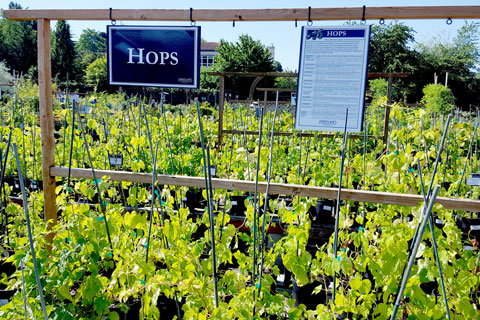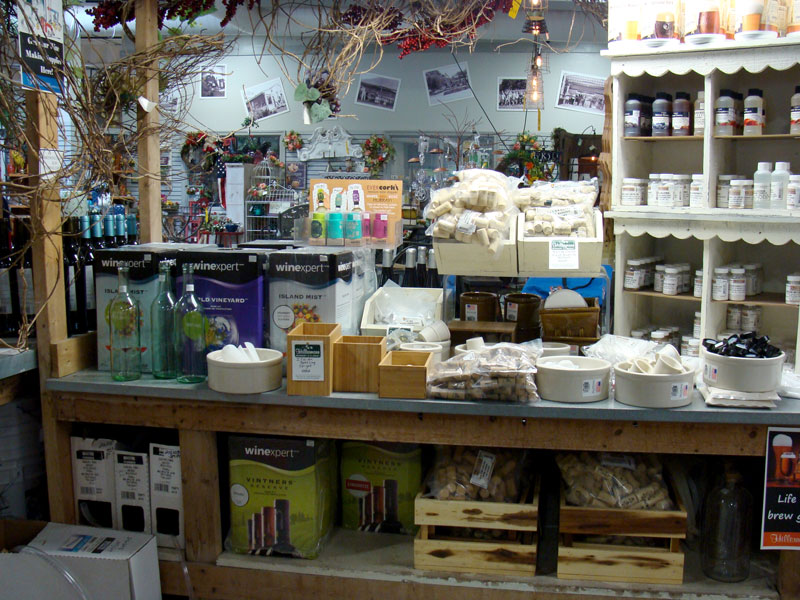3/1/2018
Raise a Glass to New Sales
Jennifer Polanz
By its very definition, a niche market isn’t for everyone. So the first caveat of this story is to do some investigative reporting in your region to understand the home brewing and wine-making market.
However, having said that, both home beer brewing and wine making have hobbyists busy around the country, and garden centers are uniquely positioned to serve customers looking for these supplies. In particular, the home beer brewing contingent continues to grow and could be an underserved customer in your area.
I spoke with Steve Parr, assistant director of the American Homebrewers Association (AHA), who told me in the association’s most recent survey they counted 1.1 million home brewers in the U.S., with about 40% of them just starting within the past four years.
“So we have seen some pretty incredible growth in the homebrew hobby,” he notes, adding online sales take up a rather large piece of the retail pie when it comes to supplying the materials needed. Unfortunately, independent retailers had been reporting upwards of 20% growth and now they’re looking more at flat sales. All told, he said they counted about 700 independent home brew shops around the country, which means there could be underserved markets where the right marketing and in-store events could convert online sales to in-store loyalty.
Working with Customers
Hillermann Nursery & Florist in Washington, Missouri (about 50 miles outside St. Louis), has been in the home brew and wine equipment game for about four years and the segment continues to grow for them. Right now, it takes about 320 sq. ft. of retail space in the shop, but JoAnne Jolley of Hillermann says it’s constantly growing.
“Customers are excited about not having to make the long trip into St. Louis to purchase their supplies or having to buy them online,” JoAnne says. “We try to keep our prices very competitive and if we don’t carry something they are looking for we are happy to order it in for them. Our customers have been great at giving us suggestions on what to carry, and it’s been a win-win for both the customers and us.”
So what should you carry? Naturally, being a plant retailer first, live hops plants, herbs and grape plants are a start. There are resources on the AHA website (www.homebrewersassociation.org) for beginner, intermediate and advanced brewers, including equipment lists, ingredients and recipes. It also has an independent retailer finder, so if you carry this equipment or begin to, check out how to get listed with them.
 Pictured: A wide selection of hops plants and a description for each at Portland Nursery in Portland, Oregon.
Pictured: A wide selection of hops plants and a description for each at Portland Nursery in Portland, Oregon.
JoAnne says they’re heavy in social media and blast out information about their events and workshops, including a year-round wine-making class where they actually make the wine.
“We start at the beginning, from picking or purchasing your fruit, fermenting it into the wine, aging the wine and to the final step of bottling,” she describes. “The classes have been a great success!”
Hillermann didn’t need a license to carry the home brew and wine-making equipment, JoAnne notes, but they do have a liquor license for the wine they sell. She adds that retailers who carry this equipment should focus heavily on fruit and berry harvest season and the holidays for equipment and kit sales.
Steve at the AHA highly recommends independents host lots of in-store events, as well as get involved in local festivals and home brew clubs. He also mentions events like birthdays, holidays and other special days as great ways to get people involved in the hobby, either giving home brew kits as gifts or having a special, in-store event. But it’s not just enough to have the equipment in the store and bring in customers.
“I’d suggest they have at least one, maybe two people on staff who are familiar with the brewing process,” he says. “Have a staff brew day. Get everybody together and brew a batch of beer. They’ll have a more knowledgeable staff and a team-building activity.”
Another Option
Steve did note that while home brewing is popular, some of the need for it is waning, thanks to the proliferation of craft brew joints pretty much everywhere. Some people brew for the love of the technical aspect and the fact that they’re making their own special brew. Others, however, brewed out of necessity for lack of access to good microbrews. That necessity is gone now, as the amount of microbreweries and brewpubs is at an all-time high in the U.S.

Pictured: Just part of the 320-sq. ft. display of home wine-making and beer brewing equipment at Hillermann Nursery & Florist in Washington, Missouri.
So what’s another option if customers aren’t interest in DIY? Give ’em the best of your local brews and wineries with a top-notch beer and wine section. That’s what Sawyer Home & Garden Center in Sawyer, Michigan, did more than 10 years ago. The wine sells better than the beer, mainly because the garden center shares a driveway with a brewpub called Greenbush Brewing Co.
“The wine coincides a little better with the accessories and food pairings we offer,” says Nicholas McReynolds, assistant operations manager for the garden center. “It definitely works out.”
They host wine tastings every weekend, with the winter being a bit slower and the summer picking up. The tastings are vital because usually if a customer tastes something they like they buy it. Nicholas says they switch up the tastings for different styles and labels so customers aren’t tasting the same things. The garden center also has a wine club, which allows members to receive a discount, invites to special events, a newsletter and more.
The section takes up about 1,500 sq. ft. of space and now includes a spirits and liquor section. The garden center had to apply for its liquor license through the State of Michigan and it requires some specific rules related to employees, as well as updated information and prior approval on any improvements to the retail location. That’s just what Sawyer Home & Garden Center had to do, though—it could be different in your neck of the woods.
Nicholas says the foray into beer, wine and spirits has definitely been worth it. The segment, which has about 200 SKUs in each of the categories, accounts for about 10% of the yearly sales. It’s enough, too, to warrant a new walk-in beer cooler, which is on tap for the near future.
“It’s doing well every year and we do plan on expanding that room,” Nicholas adds. “It’s definitely growing.” GP